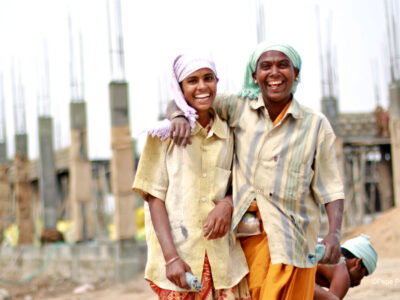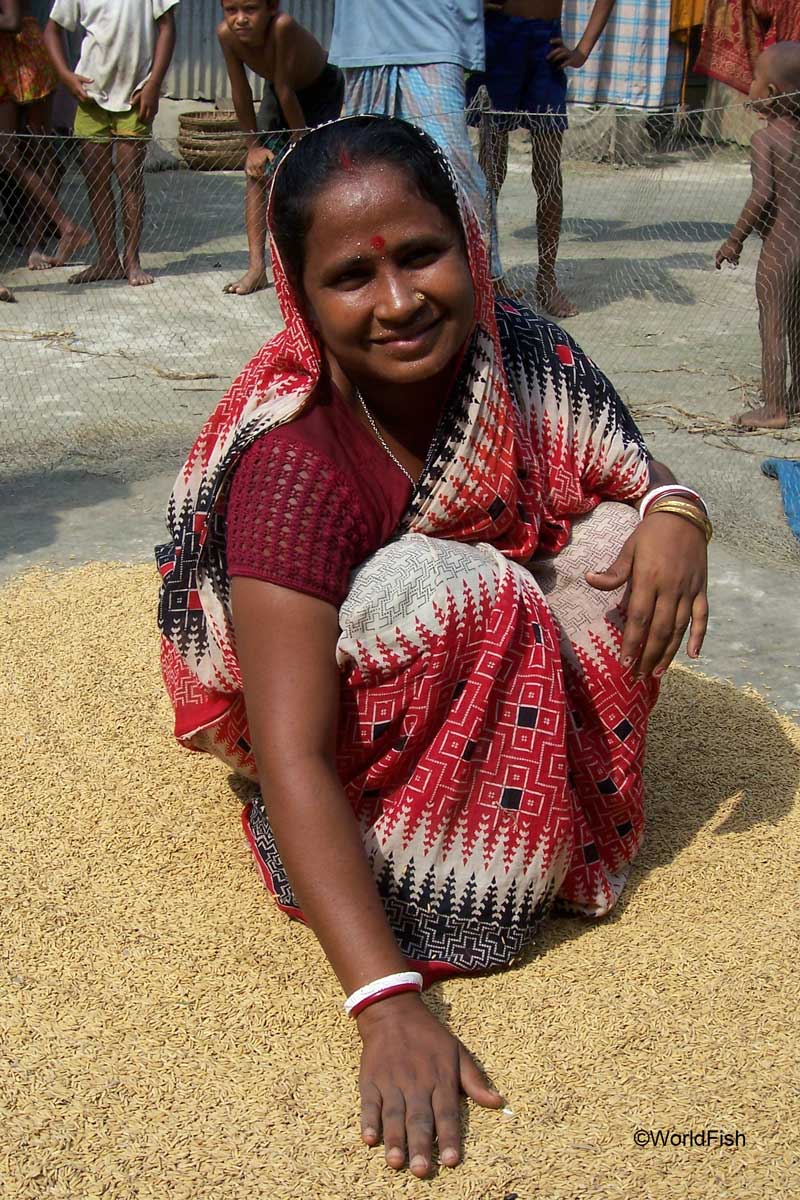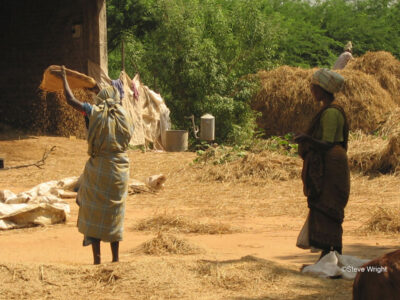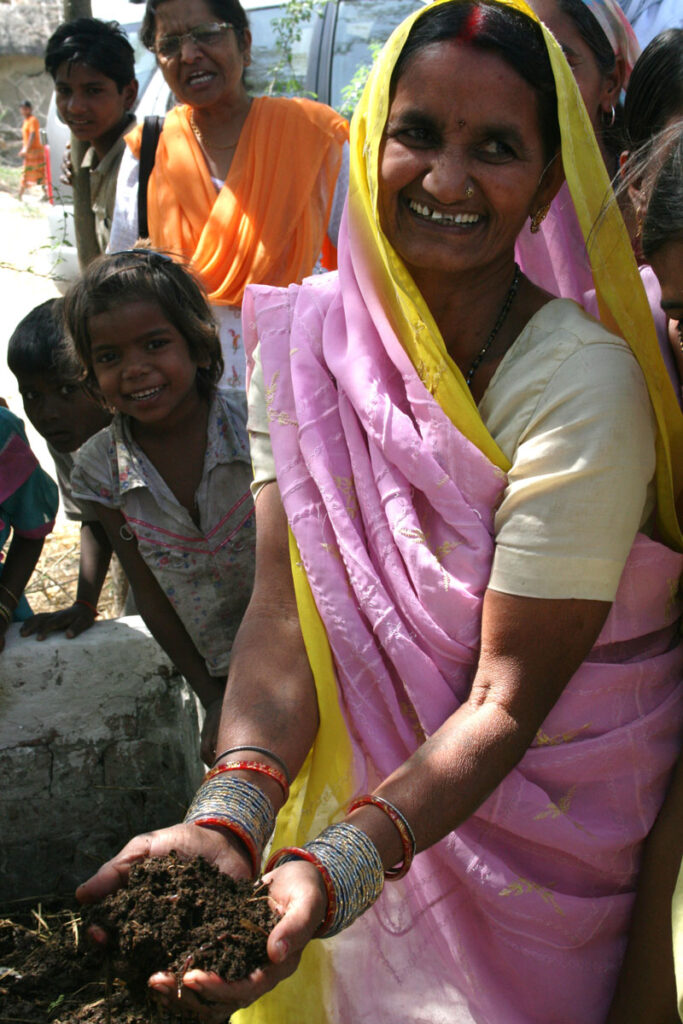Project Info
Project Description
The issue of gender inequality continues to persist as a significant challenge, not just from a development perspective, but also from a human rights perspective. In recent times, there has been a growing emphasis on empowering girls and women across different sectors, spurred by the United Nations’ Sustainable Development Goals (SDGs), which prioritize achieving gender equality and women’s active participation in achieving other SDGs as equal partners.
In collaboration with the Independent Evaluation Unit (IEU) of Green Climate Fund (GCF) and International Fund for Agricultural Development (IFAD) we worked on two systematic reviews and two evidence and gap maps.
Evidence and gap map of evaluations of interventions to increase women’s empowerment in developing countries (Gender Map)
Funder: IEU/GCF and IFAD
Background

©Pepe Pont
This evidence and gap map maps the effectiveness of interventions for women’s empowerment in developing countries defined by the Kyoto Protocol. It highlights the areas with the most research on intervention effectiveness and identifies areas with fewer studies. It’s a helpful tool for researchers, practitioners, and policymakers.
Approach
The EGM evaluates interventions that empower women in developing countries through impact evaluations, process evaluations, and systematic reviews. The target population includes girls and women, as well as boys and men.
The map is structured using an intervention-outcome and PICOS framework, and includes 423 studies, comprising 288 impact evaluations, 105 process evaluations, and 38 systematic reviews. The majority of systematic reviews included in the map are low-confidence reviews.
What we found
- Majority of evidence in the map is from Sub-Saharan Africa and South Asia
- Economic interventions and capacity building interventions have a substantial amount of evidence, with many impact evaluations and systematic reviews
- Policy and institutional interventions have the lowest number of studies in the map, indicating a lack of evidence in this area.
This is an ongoing review
Lead Author: Sabina Singh
Effectiveness of life skills training interventions for women empowerment in developing countries: A systematic review
Funder: IEU/GCF and IFAD
Background

©WorldFish
After analyzing the map of interventions for women’s empowerment in developing countries, this systematic review topic was selected based on the EGM’s recommendations.
It was found that life skills training, which is often included as part of a multi-component intervention, has become a popular approach to empowerment. Therefore, a systematic review on this topic would be a valuable addition to the field of women’s empowerment.
Approach
This review assessed the effectiveness of life skills training interventions in empowering women in developing countries. The studies included in this review were effectiveness studies, which consisted of experimental and non-experimental studies with a comparison group.
What we found
- Impact of life skills interventions on different indicators of social empowerment varied
- Positive impact observed on social empowerment indicators such as self-esteem and decision-making skills
- Effects most pronounced on the life skills themselves, with a relatively minor effect on the final empowerment measures
- Multi-component interventions suggested to be more effective
- Life skills training considered a moderately promising approach based on the findings
- No significant effects observed for other indicators such as social mobility, networks, and social norms
The preprint for this review can be accessed here
Lead Author: Sabina Singh
Gender Transformative Approaches in Agriculture: A systematic review

© NeilPalmer/CIAT
Funder: IEU/GCF and IFAD
Background
Gender Transformative Approaches (GTAs) challenge traditional gender roles and promote gender equality by involving both men and women as equal partners in the process. They seek to raise awareness of unequal gender norms through community-based socio-behavioral change communication.
This approach operates in a bottom-up fashion, with the community itself engaging in reflection, awareness-building, solution-finding, and action.
Approach
After conducting a comprehensive search of both academic databases and grey literature sources, this systematic review concludes that the use of Gender Transformative Approaches (GTAs) in agriculture is still in its early stages. The majority of evidence (approximately 77%) on this topic is derived from the Sub-Saharan Africa region.
What we found
- Gender transformative approaches have a positive impact on women’s empowerment outcomes, especially on instrumental and collective agency.
- Qualitative evidence suggests positive changes in household decision-making and division of labor, but men still have ownership and control over assets such as land.
- Small changes in gender relations at the household level can be considered positive steps toward transforming gender norms surrounding land ownership and control.
- Including women in groups, developing leadership qualities, and improving mobility can be seen as incremental steps toward larger changes.
- The effect on intrinsic agency, such as autonomy in the use of income, was somewhat negative.
Read report
Lead Author: Sabina Singh
Effectiveness of agricultural mechanization interventions for improving women’s empowerment and wellbeing outcomes

©Steve Wright
Funder:CGIAR Gender Impact Platform
Background
Women constitute a significant portion of the agricultural workforce, but their agricultural productivity is often lower due to limited access to essential resources such as fertilizers, improved seeds, and lack of land property rights, as well as inadequate education and agricultural-specific knowledge.
Agricultural mechanization is a labor-saving technology that involves the replacement of human work with mechanical tools, alternative forms of energy like animal power, fossil energy, or renewable energy throughout the entire agricultural value chain. Despite its potential to increase productivity, the impact of mechanization on gender equality remains understudied, and there is evidence suggesting that the benefits of mechanization are disproportionately higher for men due to their better access to large farms and technology that support cultivation on these farms.
Approach
This review aims to investigate the impact of mechanization interventions on women’s empowerment using mixed methods, including both quantitative and qualitative studies. The review will investigate how mechanization affects labor demand and supply, productivity, income, health, and the environment.
By analyzing all available evidence from various sources, including unpublished research, this review aims to improve understanding of the functioning of mechanization interventions.
This is an ongoing review
Lead Author: Suchi Kapoor
Effectiveness of the value chain interventions for improving women’s economic empowerment

©Bioversity International
Funder: IEU/GCF and IFAD
Background
Over the past two decades, value chain interventions have gained widespread use in international development, and there is a pressing need to assess their efficacy in enhancing women’s welfare across multiple dimensions.
The socio-cultural norms and gender dynamics that influence agricultural value chains have an impact on the distribution of resources, benefits, and access to opportunities. Despite their crucial role in agriculture, women are typically relegated to the least profitable portions of the value chain or those with the lowest economic returns, depending on local social and institutional contexts.
Approach
We are currently conducting a mixed-method review with the aim of identifying effective approaches, strategies, and interventions that enhance women’s economic empowerment in agricultural value chains in low- and middle-income countries.
In addition, we aim to investigate contextual factors that hinder or facilitate women’s participation in value chains, which ultimately affect the impact of these interventions. This review is expected to contribute to the theoretical understanding of value chain interventions and lead to the development of a middle-range theory. Through this review, we hope to gain a better understanding of the functioning and success of value chain interventions.
This is an ongoing review
Lead Author: Suchi Kapoor
Social and Behaviour Change Communication (SBCC) interventions for strengthening HIV prevention and research among adolescent girls and young women (AGYW) in LMICs: An evidence and gap map

©Adam Cohn
Funder: IEU/GCF and IFAD
Background
Adolescent girls and young women (AGYW) aged 15-24 face disproportionate risks related to HIV and other Sexual and reproductive health (SRH) problems due to socio-cultural and economic factors. Socio-Behavioral Change Communication (SBCC) interventions have been effective in promoting prevention services and increasing participation in biomedical research. However, high-quality evidence on the effectiveness of SBCC remains scattered.
This EGM aims to assess the evidence base for SBCC interventions targeting AGYW in LMICs to enhance HIV prevention and research. By identifying evidence gaps and outlining future research and program design, the EGM aims to improve the effectiveness of SBCC interventions in this context.
Approach
This EGM analyzed interventions and outcomes that aimed to engage AGYW in HIV prevention and research in LMICs. The study looked at 23 behavioral and health outcomes and categorized interventions into four themes: mass-media, community-based, interpersonal, and ICT/digital media-based. A total of 415 impact evaluations and 43 systematic reviews were included in the analysis.
What we found
- Evidence focused on increasing awareness, knowledge, and risk perception around SRH domains
- Fewer studies focused on strengthening agency and self-efficacy of individuals, revealing a gap in evidence addressing behavioral barriers
- Need to engage influencers to create an enabling environment for promoting safe and positive sexual health behaviors
- Importance of strengthening AGYW participation in biomedical research.
Read report
Lead author: Sabina Singh
Interventions to promote women’s entrepreneurship in agribusiness: an evidence and gap map
 Funder: IEU/GCF and IFAD
Funder: IEU/GCF and IFAD
Background
The evidence and gap map presents an overview of the existing evidence regarding the efficacy of interventions aimed at promoting women’s entrepreneurship in agribusiness across low- and middle-income countries (L&MICs).
The map offers an interactive and visual presentation of both ongoing and completed studies, organized according to a framework of interventions and outcomes primarily based on the Women’s Empowerment in Agriculture Index (WEAI). Developed to measure women’s agency, inclusion, and empowerment in the agricultural sector, the WEAI serves as a foundation for this map’s structure.
Approach
Within the EGM, we have gathered 170 studies that have been published in English, encompassing a range of research methodologies such as quantitative, qualitative, and mixed-methods systematic reviews and impact evaluations, as well as qualitative and mixed-methods studies that describe interventions related to women’s entrepreneurship in agribusiness. Our inclusion criteria for systematic reviews were based on studies conducted within L&MICs.
What we found
- The included studies in the EGM provide substantial evidence on key areas central to WEAI indicators.
- The most commonly reported study design was process evaluations, followed by systematic reviews, quasi-experimental with comparison groups, pre-post designs, qualitative outcome reports, impact evaluations, non-experimental designs, and randomized controlled trials (RCTs).
- RCTs were found across nearly all regions of developing economies, including low-income and lower middle-income countries.
- The most reported intervention category was resources, followed by institutions and policies.
- The training subcategory was identified as an important factor in improving gender disparity and enhancing business and financial training among women.
Lead author: Bhumika TV
Interventions promoting resilience through climate-smart agricultural practices for women farmers: A systematic review
Funder: The CGIAR Generating Evidence and New Directions for Equitable Results (GENDER) Platform form

©Diganta Talukdar
Background
This review aims to consolidate evidence on the effectiveness of interventions promoting climate-smart agriculture, specifically targeting women farmers in low-and middle-income countries.The goal is to enhance agricultural outcomes and bolster resilience in the face of climate challenges.
Approach
This review focuses on the inclusion of studies examining interventions that support the adoption of climate-smart agriculture (CSA) approaches by smallholder women farmers, rather than assessing the impact of CSA approaches. Emphasis will be placed on utilizing studies employing experimental or quasi-experimental counterfactual approaches to examine the evidence of effects.
What we found
The study is ongoing and the protocol has been published.
Lead author – Dr Ashrita Saran
 |
 |
